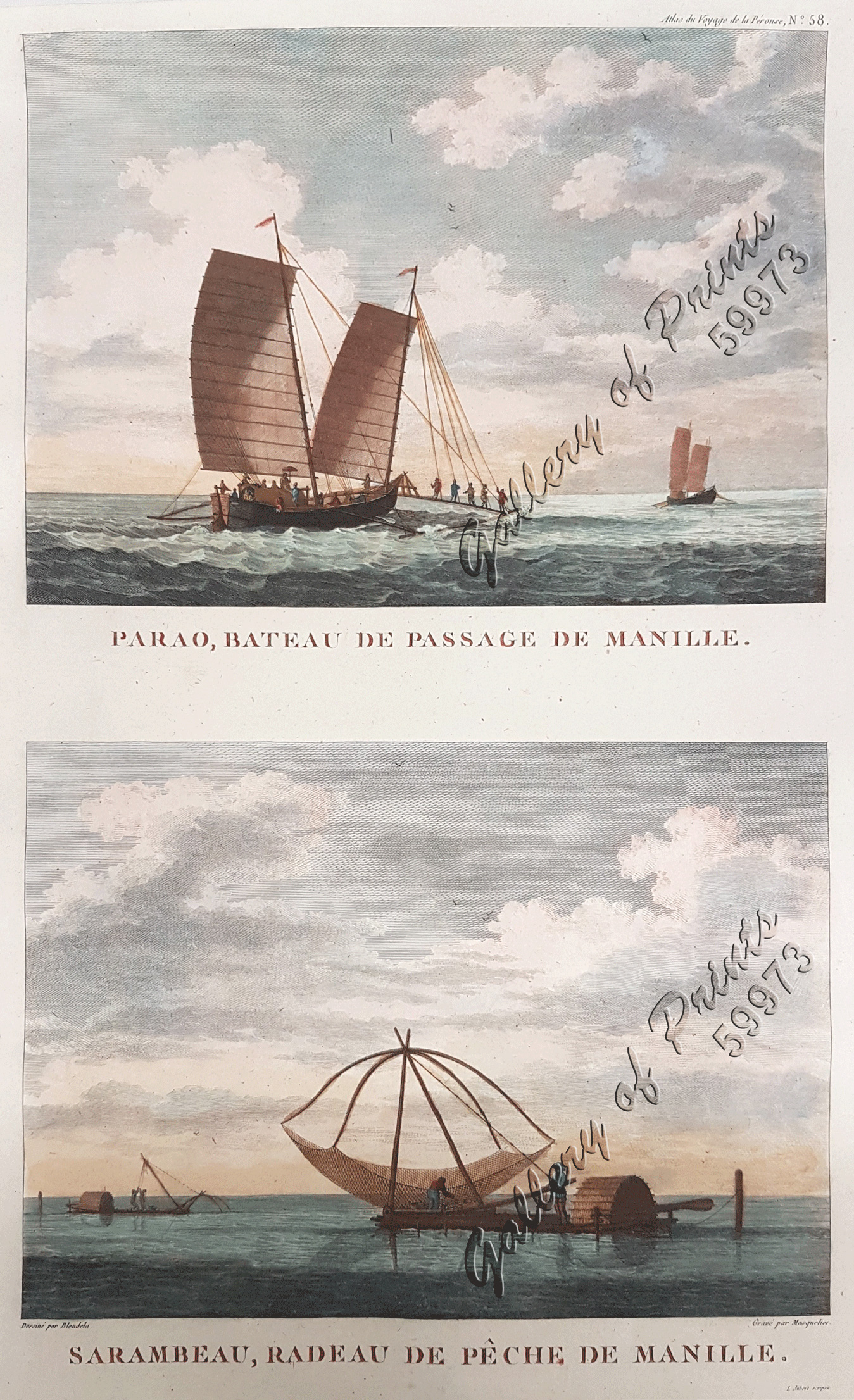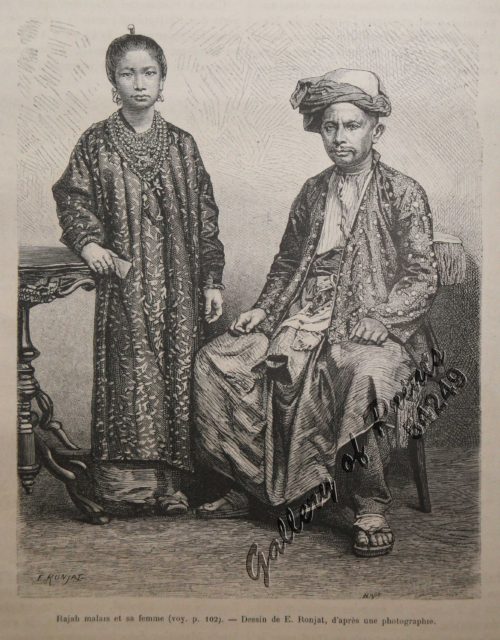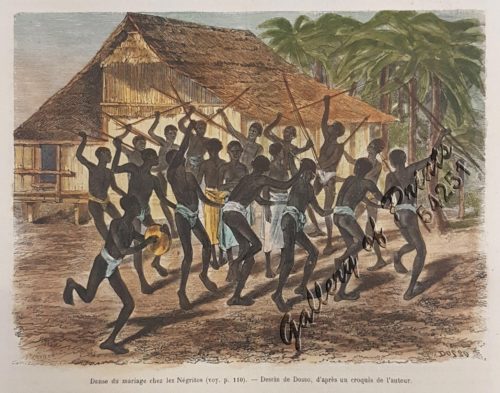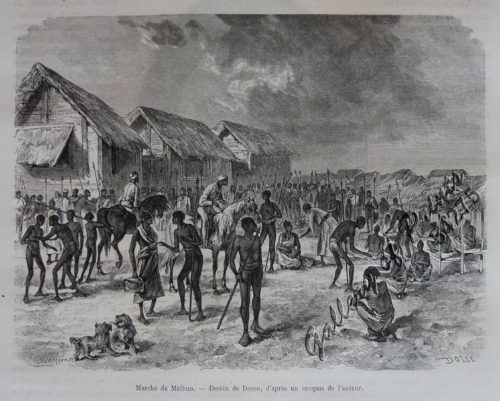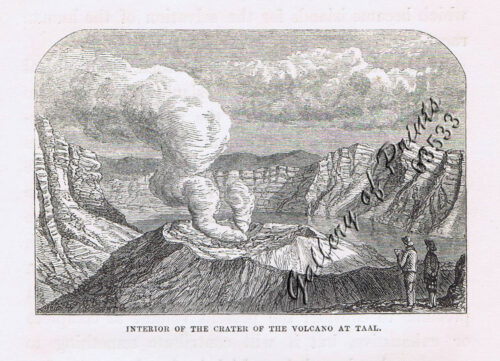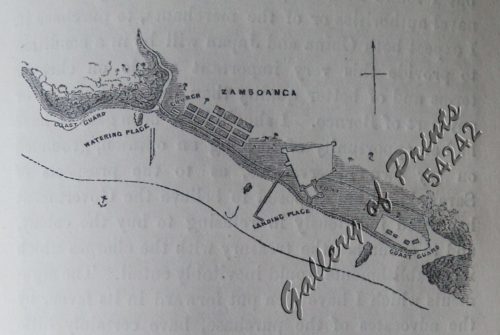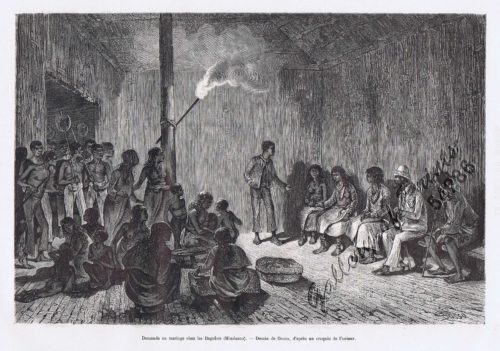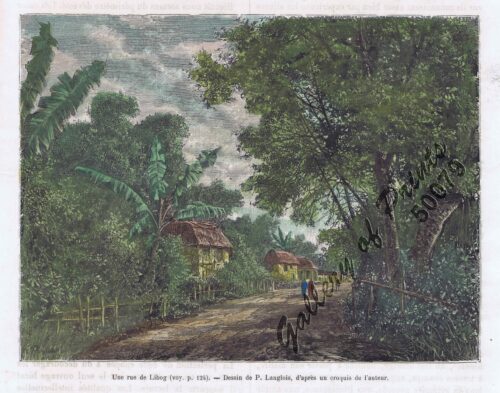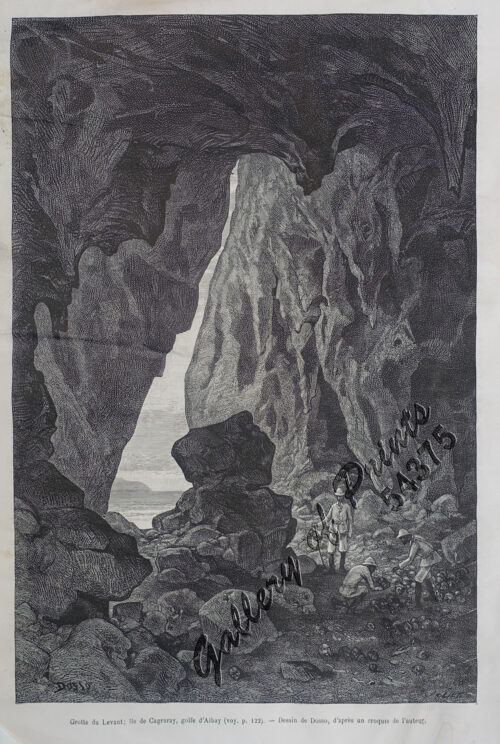1) Parao, Bateau de Passage de Manille (Parao, ferryboat of Manila); 2) Sarambeau, Radeau de Peche de Manille (Sarambao, fish trap of Manila)
₱22,000.00
In Stock
In Stock
Description
hand-coloured copper engraving. View from ‘Atlas du Voyage de La Perouse’; pl. 58.
Paraw (Parao) are various double outrigger sail boats found throughout the archipelago. A general term (similar to the term bangka), it can refer to a range of ship types, from small fishing canoes to large merchant lashed-lug plank boats (balangay or baloto) with two outriggers (katig), propelled by sails (usually a large crab-claw sail opposite a smaller triangular foresail).
Sarambao (also known as saraboa or salakab), is a type of lift net used by indigenous fishermen in the Philippines, most prevalent in large lakes like Laguna de Bay, and sheltered coastal areas like Manila Bay, Ragay Gulf, and Batan Bay. Variations of salambáw lift nets include the bintol (used for catching crabs), panak (used for catching chambered nautilus), tangkal (a stationary lift net operated at night), and the basnig (a deep-water lift net operated from outrigger canoes). [wikipedia]
The author, La Perouse set sail from France in 1785 to continue the discoveries of Captain Cook. He was shipwrecked in 1788 but his narrative, maps, and views survived as they were sent to France from Australia, and were published in 1797.
Condition
Very good to excellent condition.

